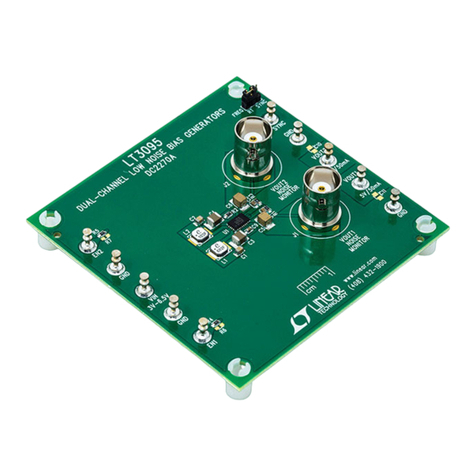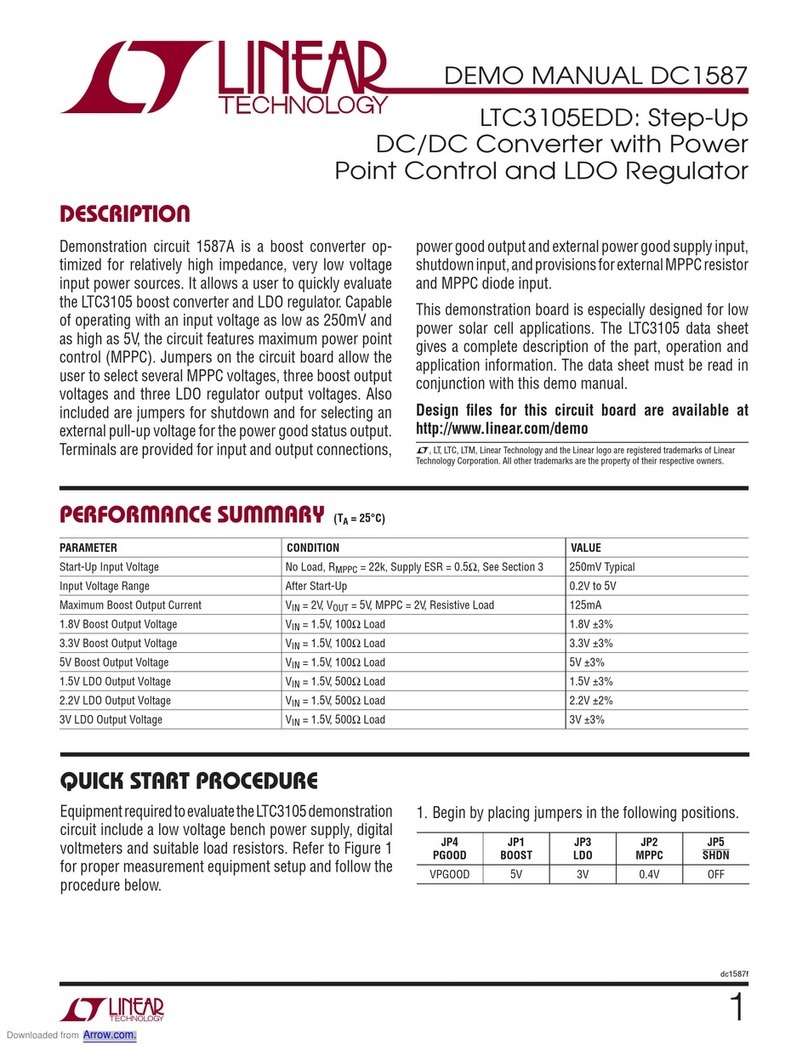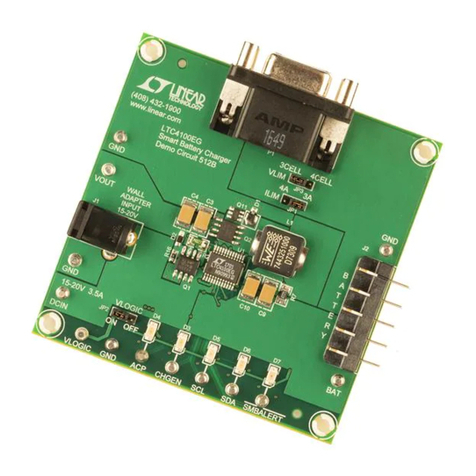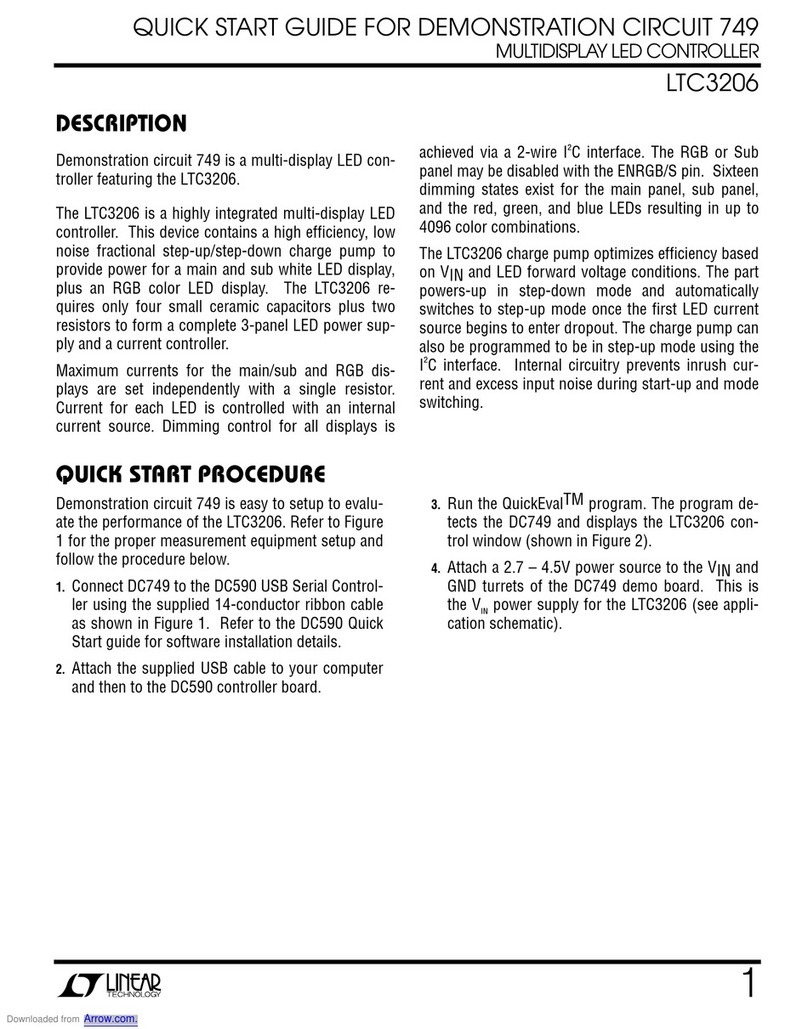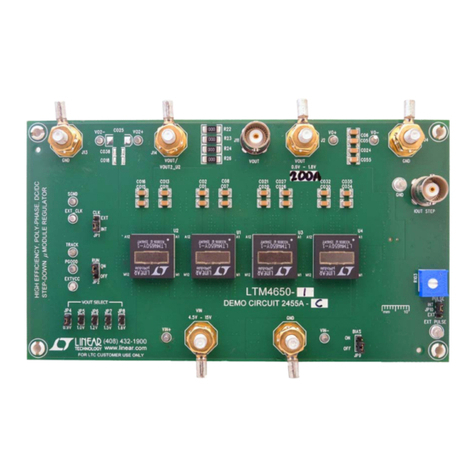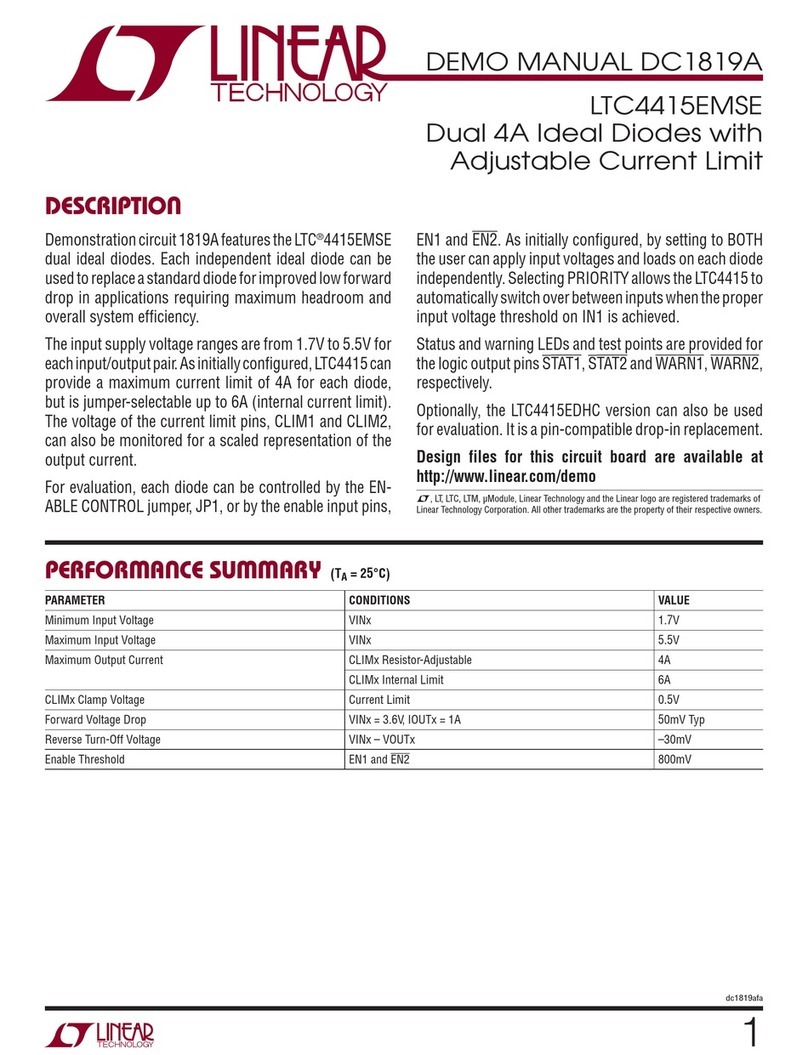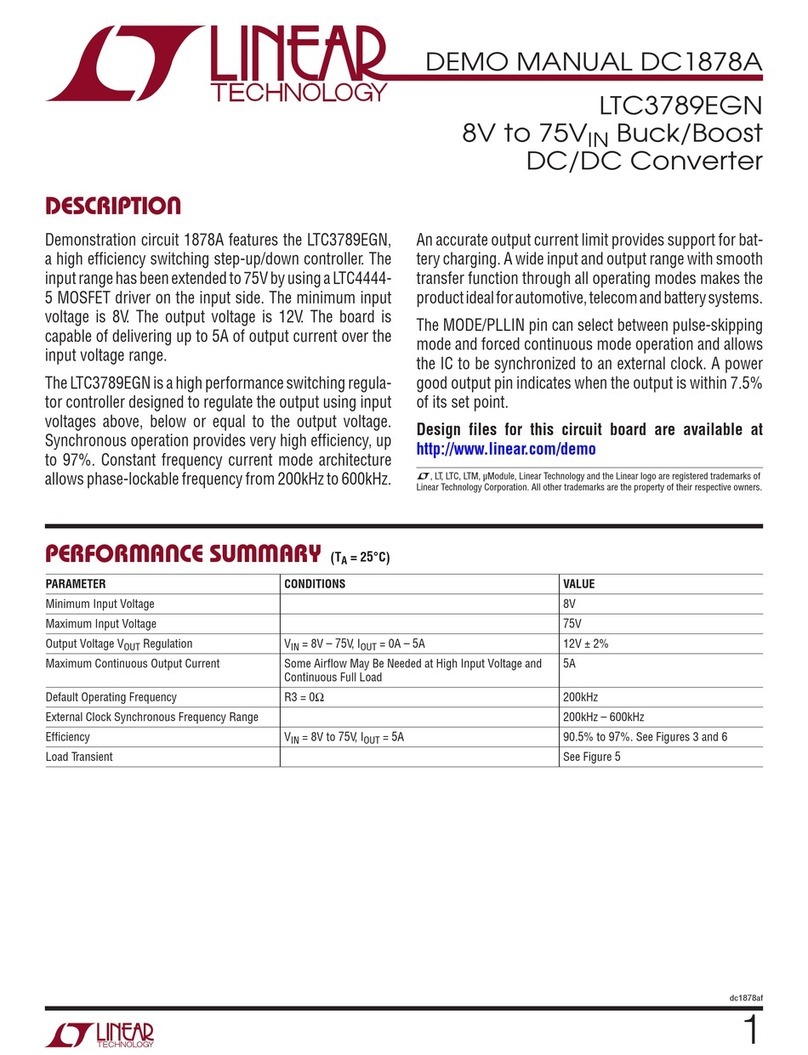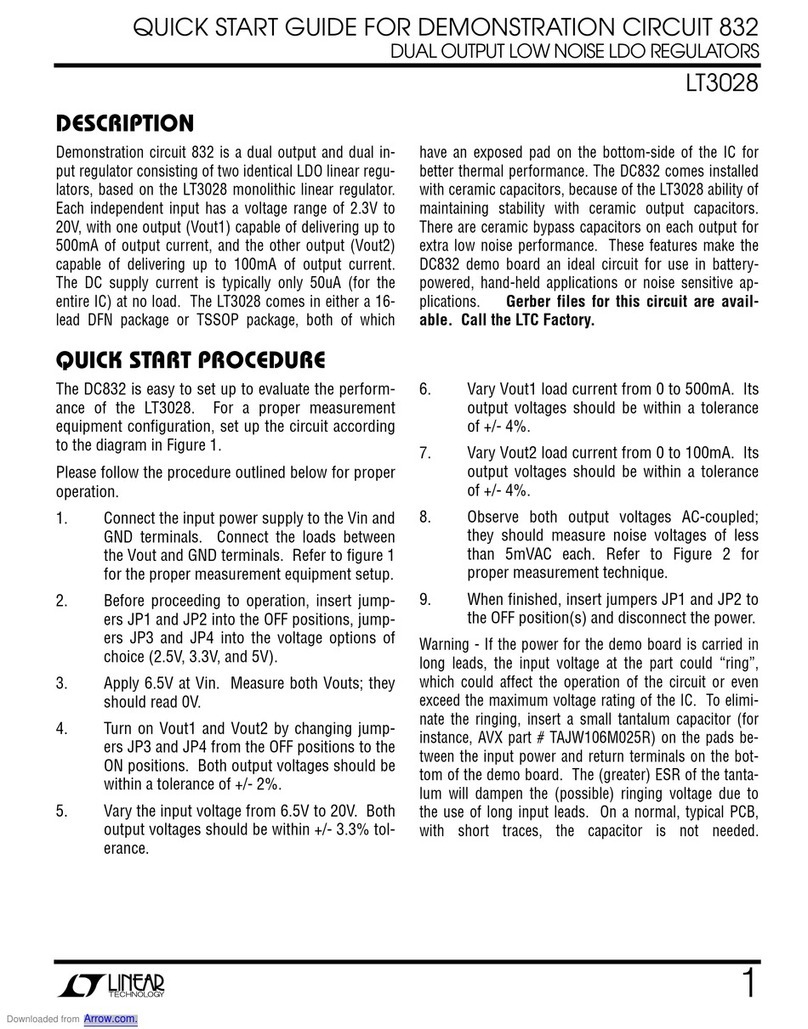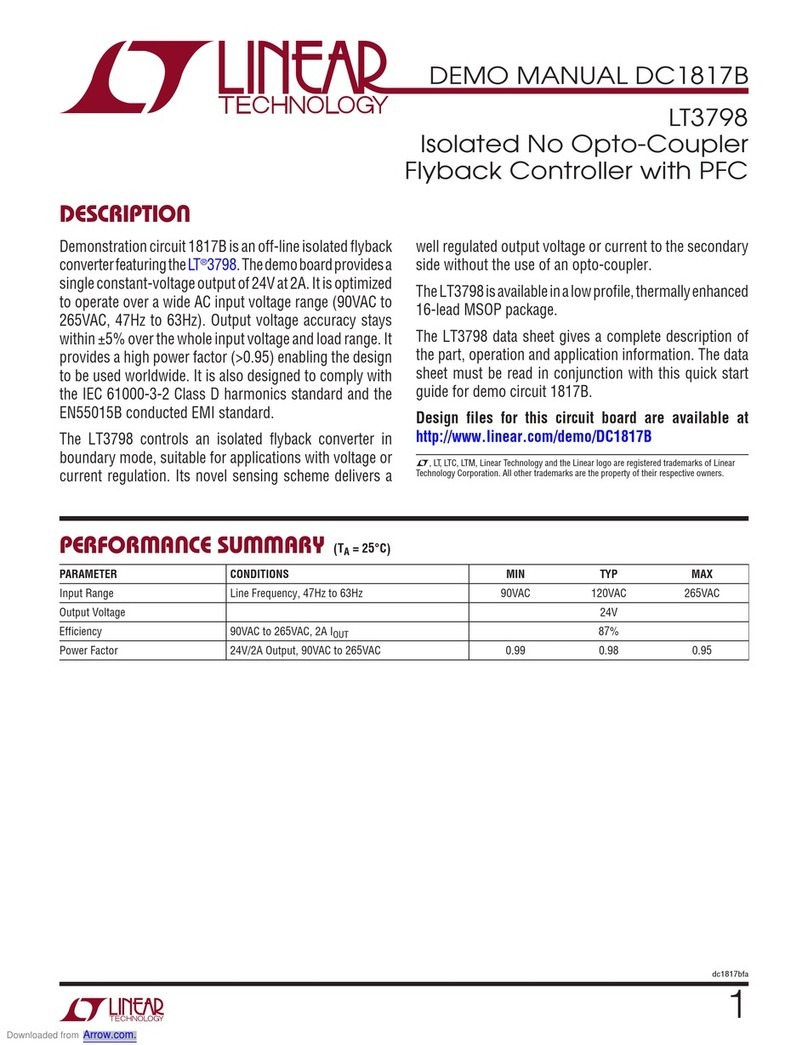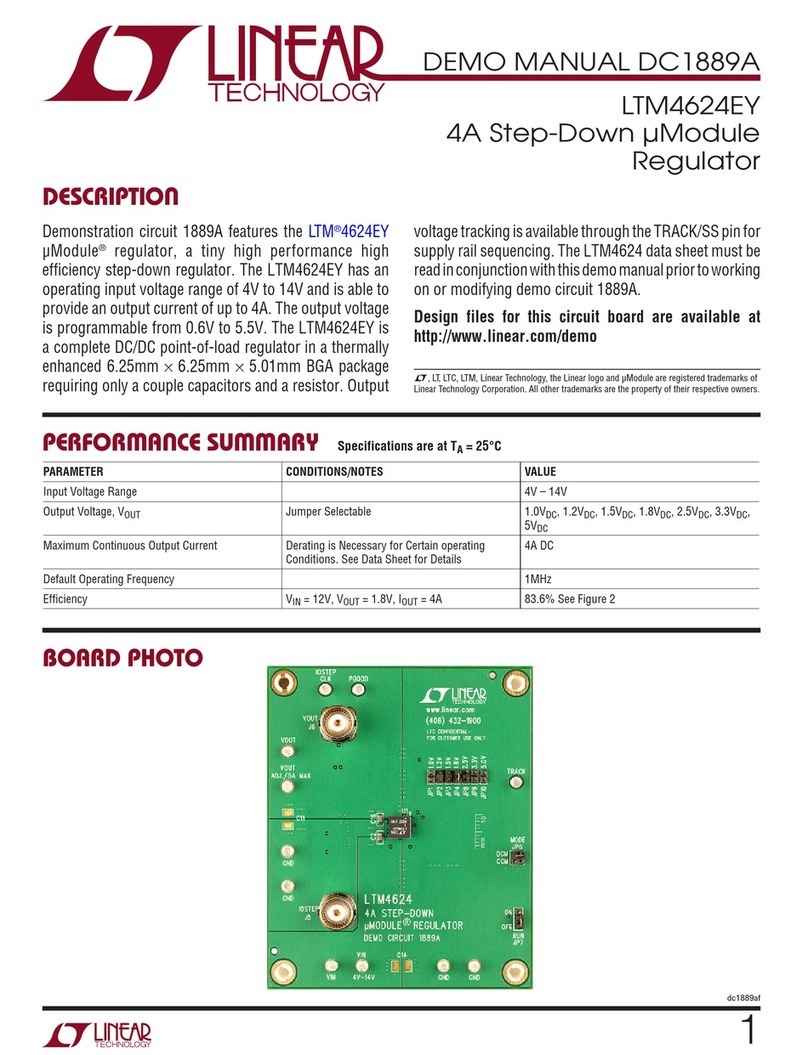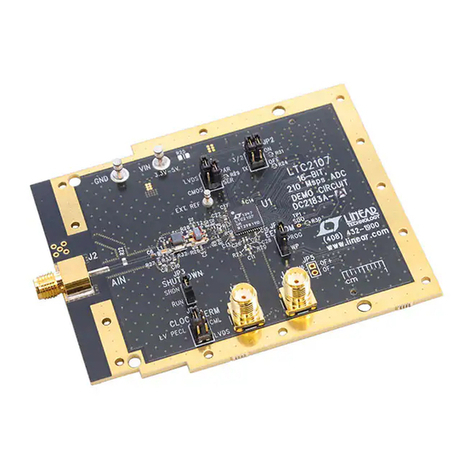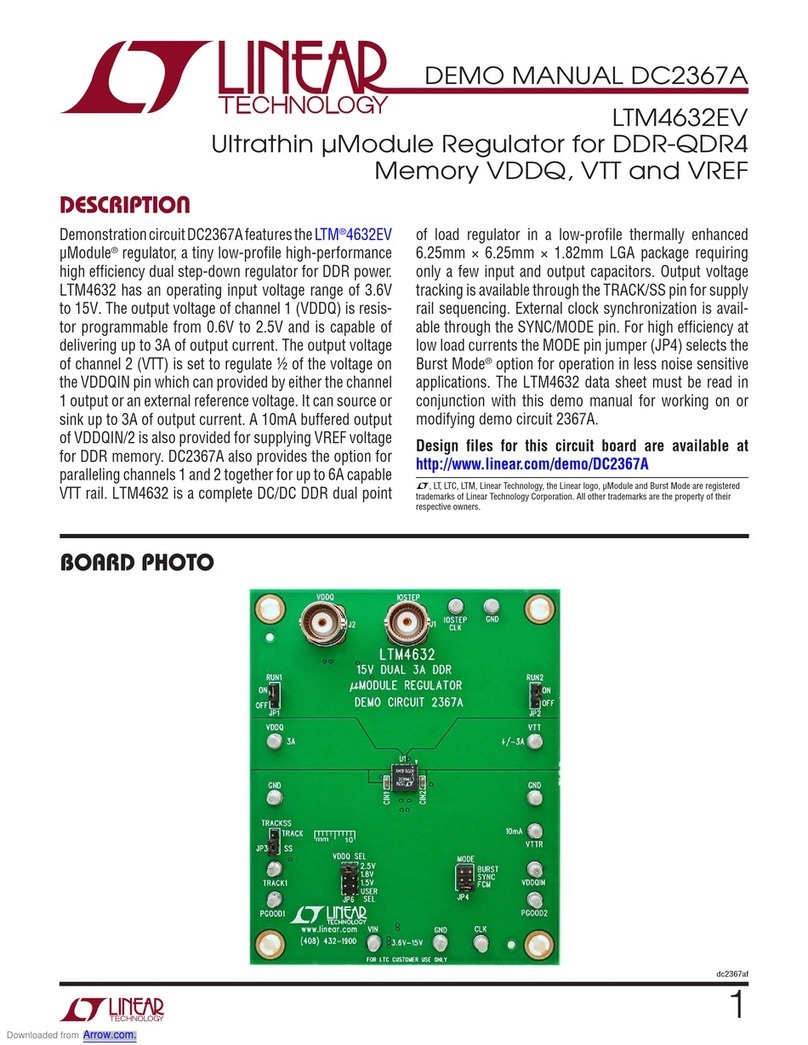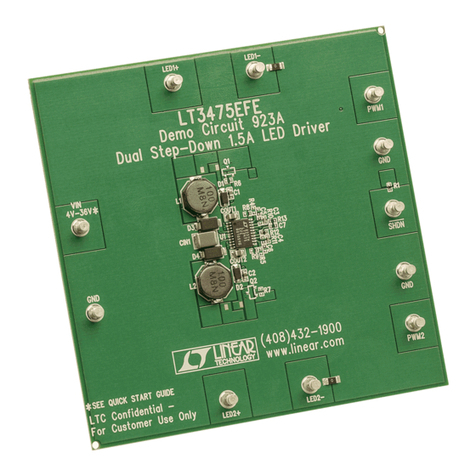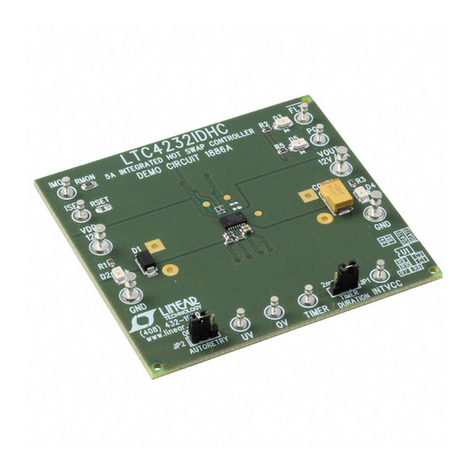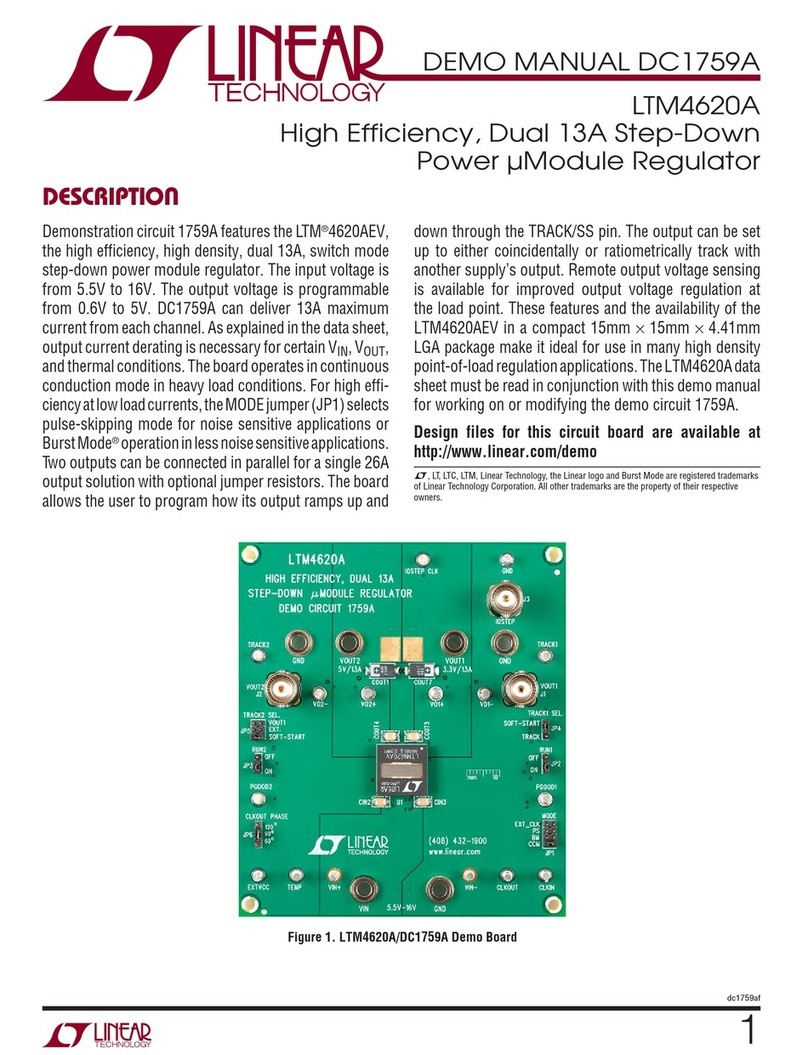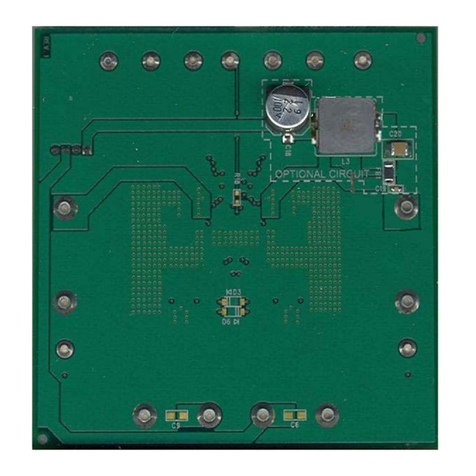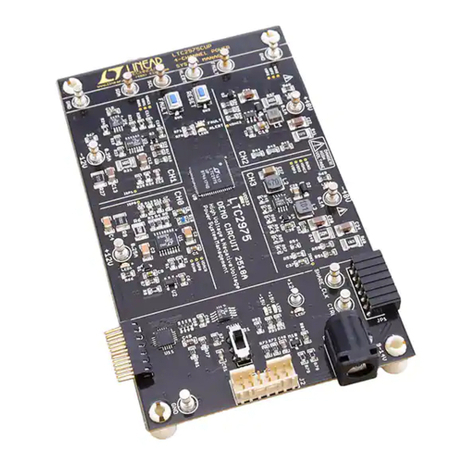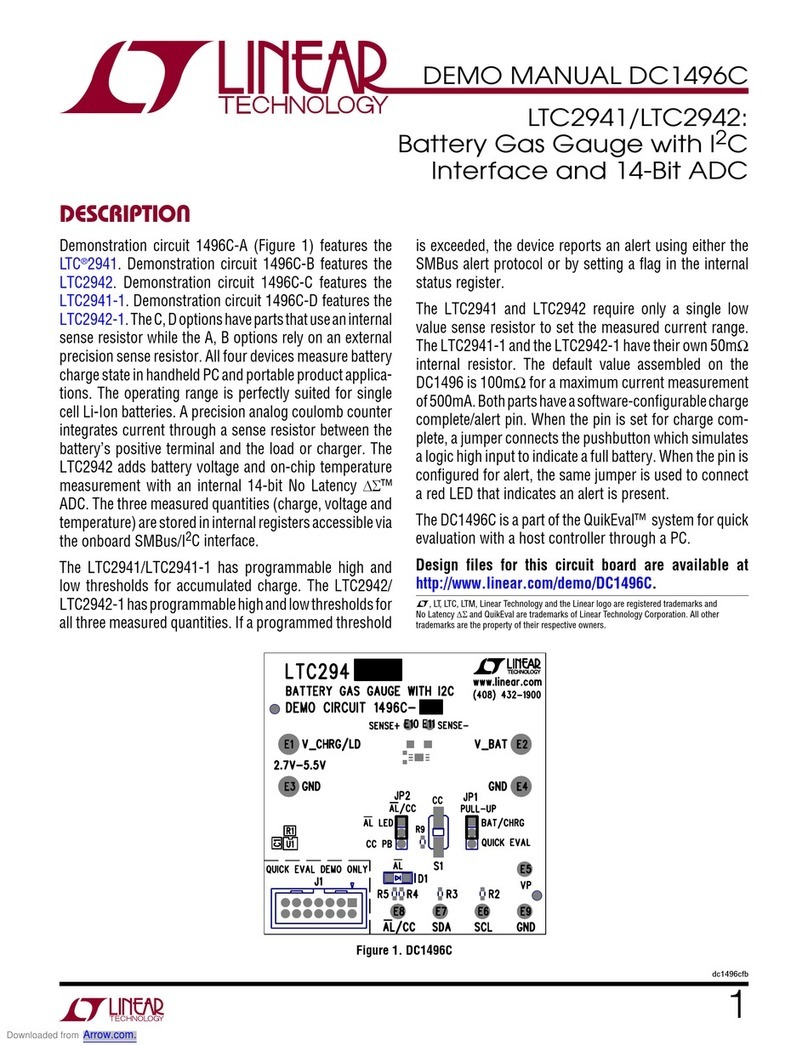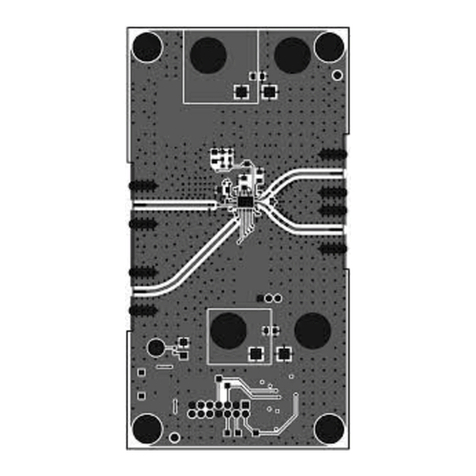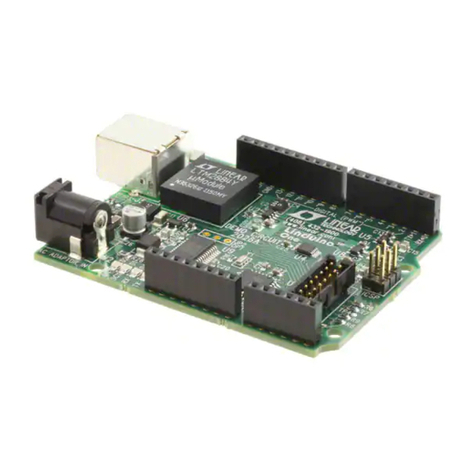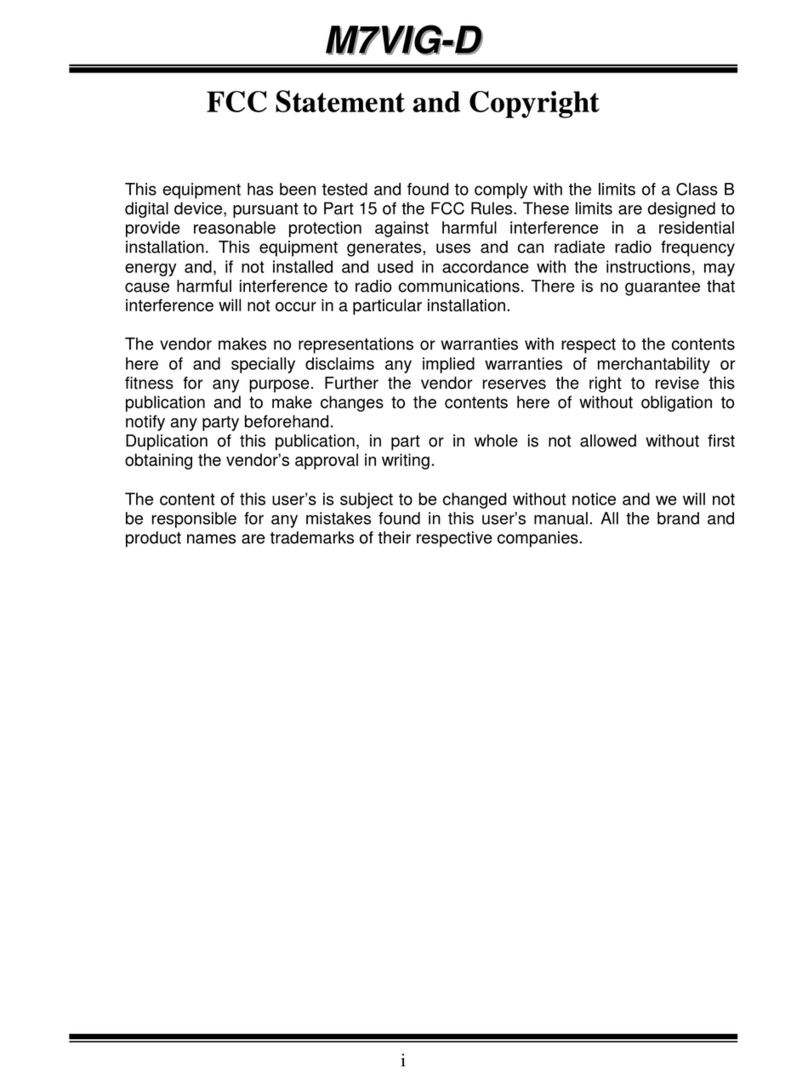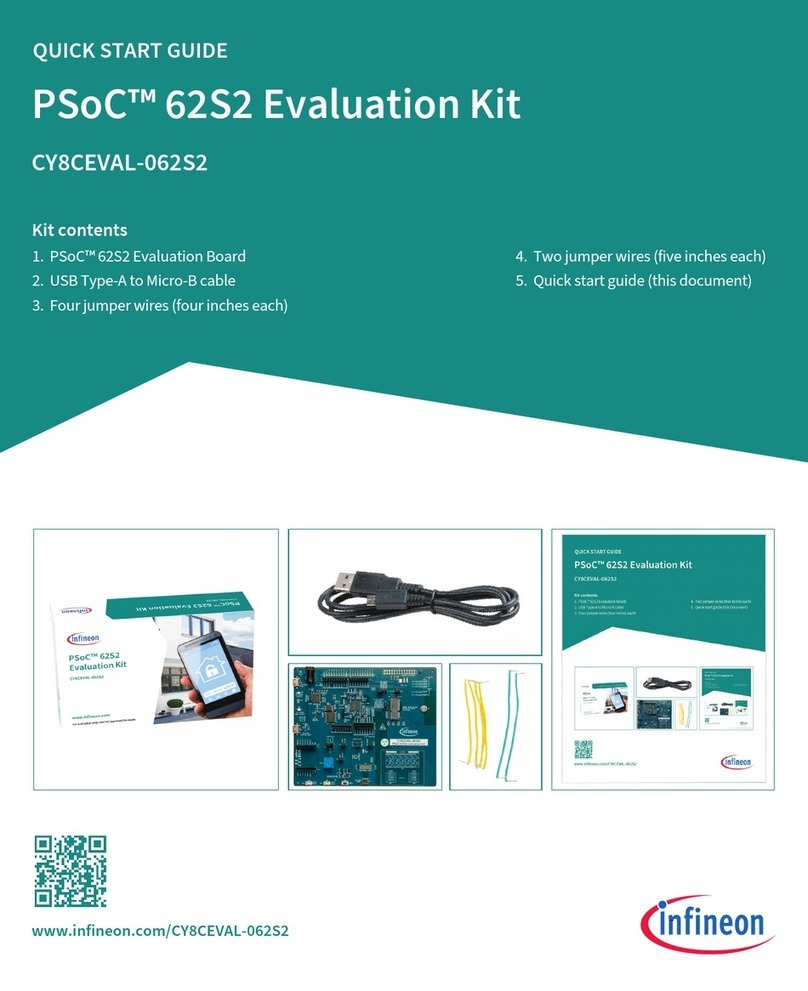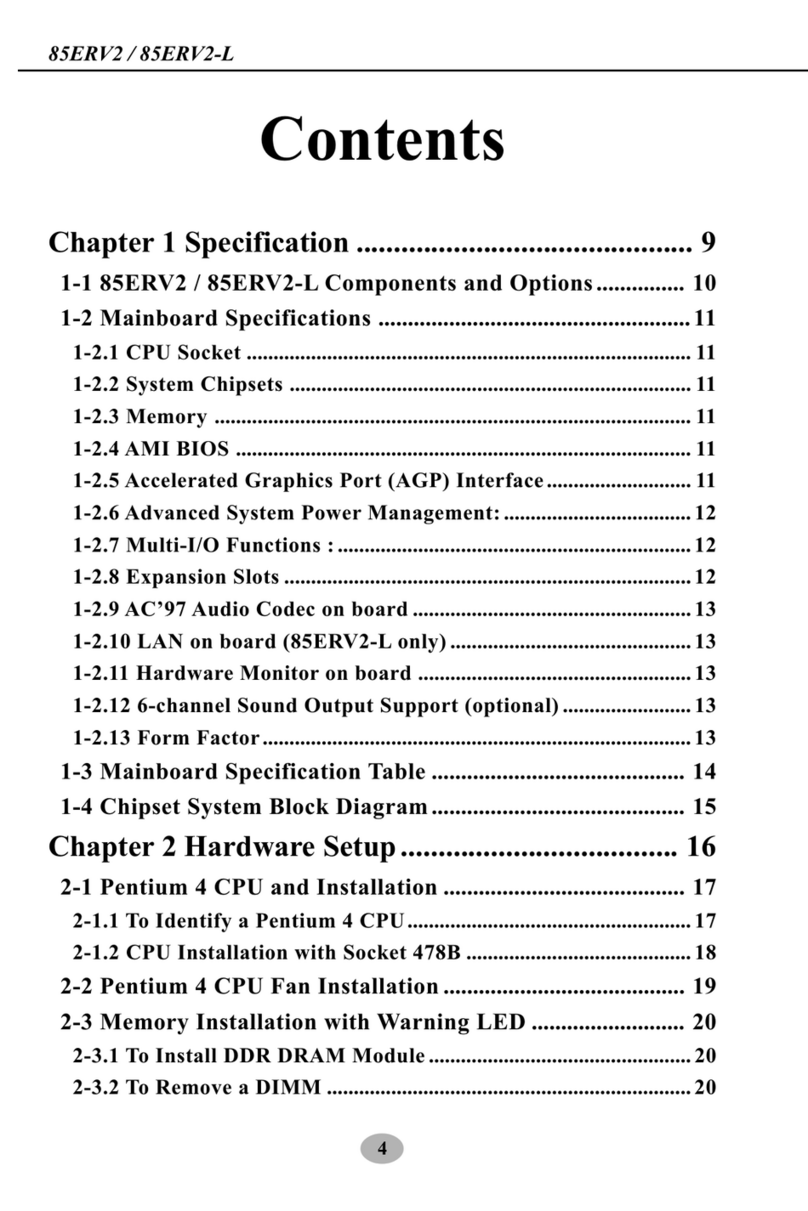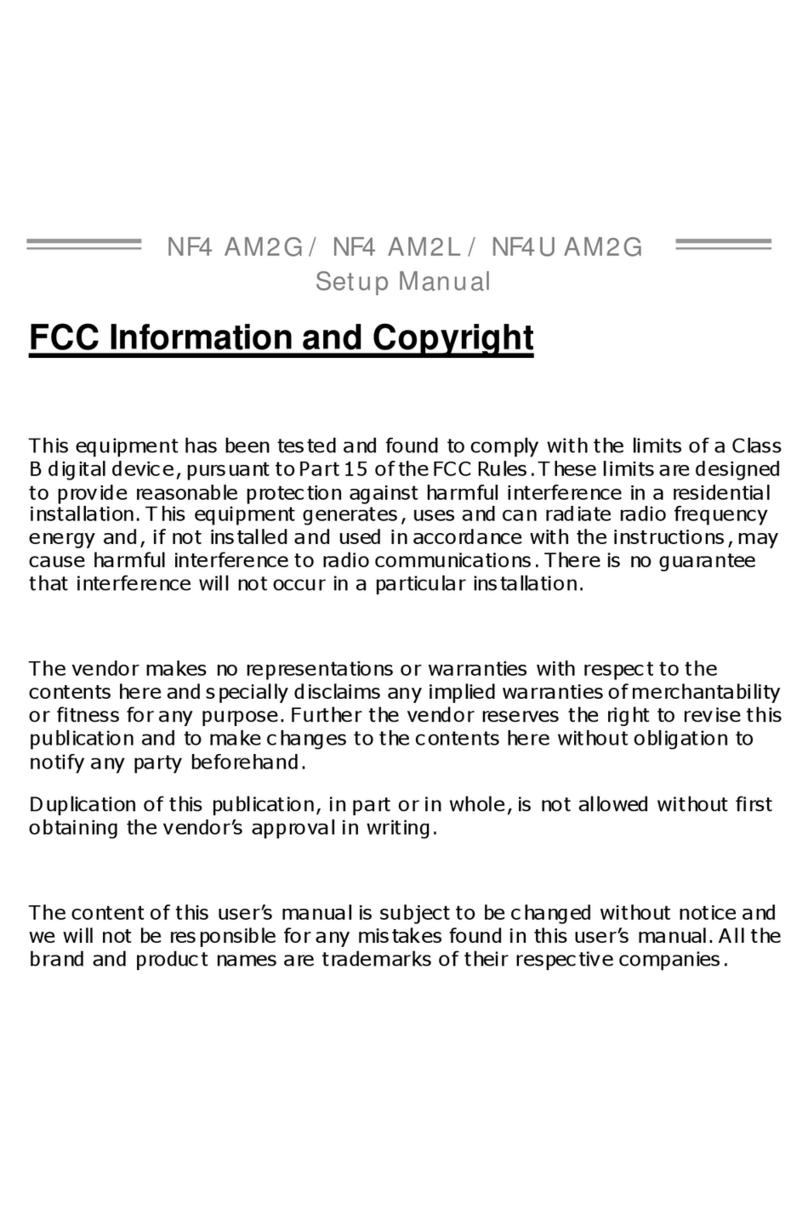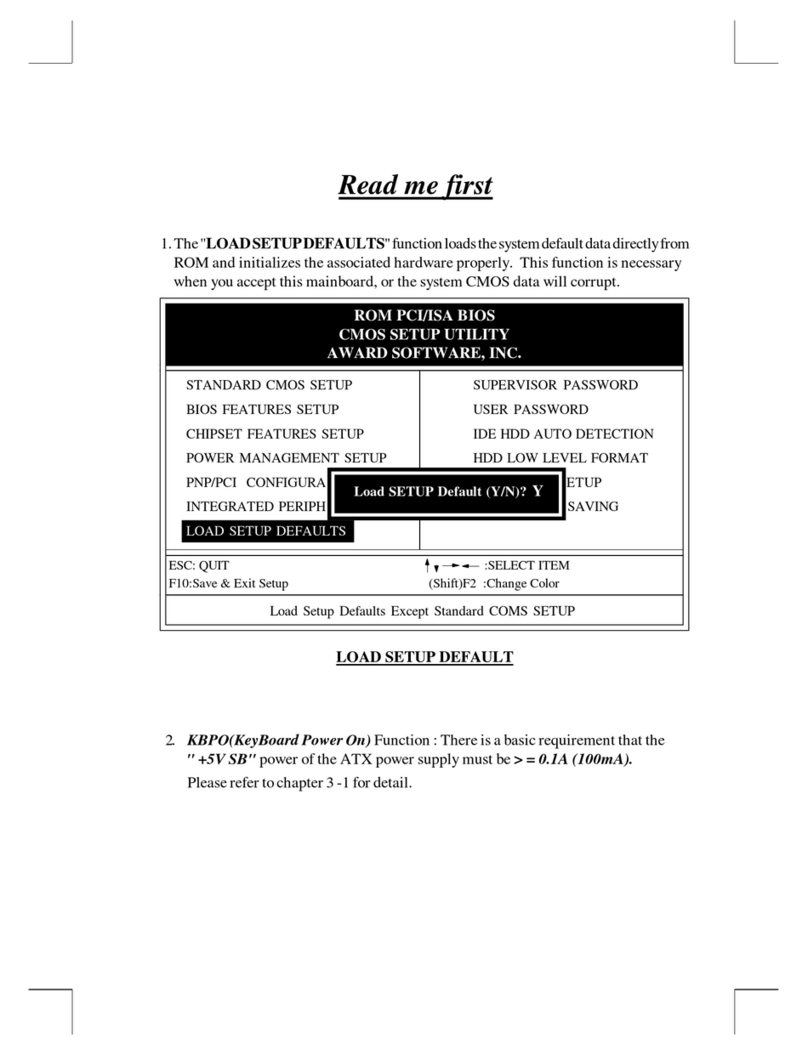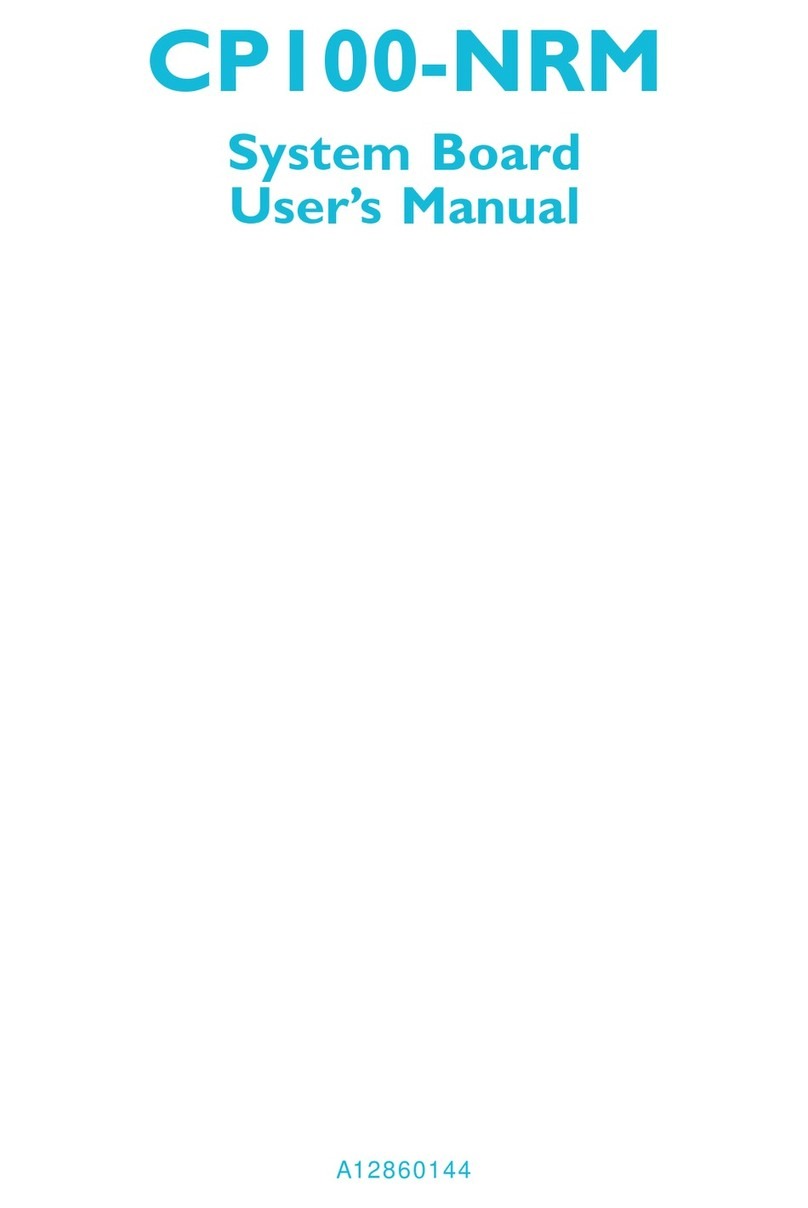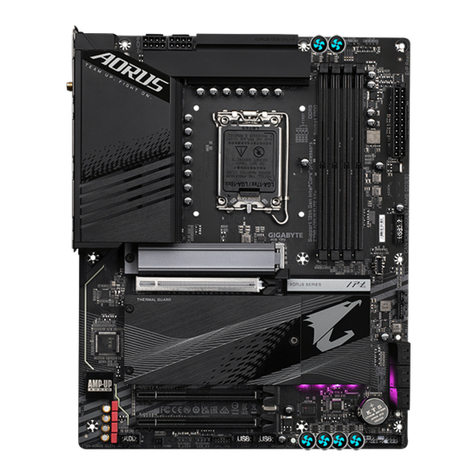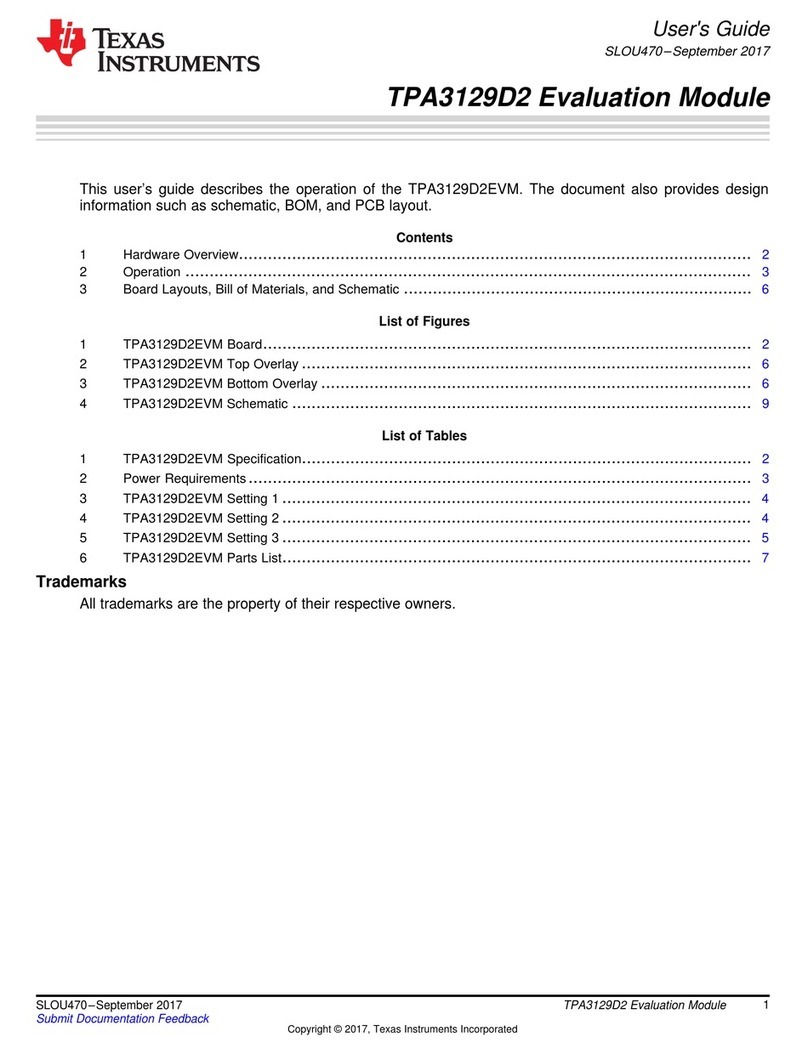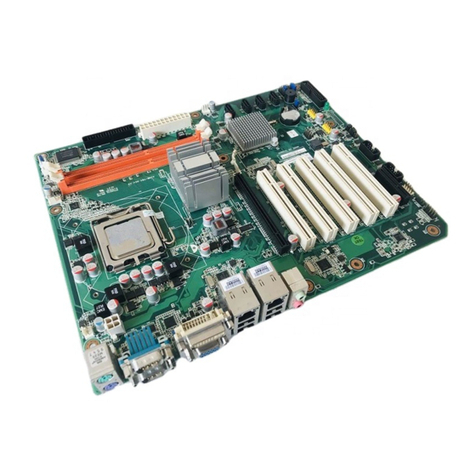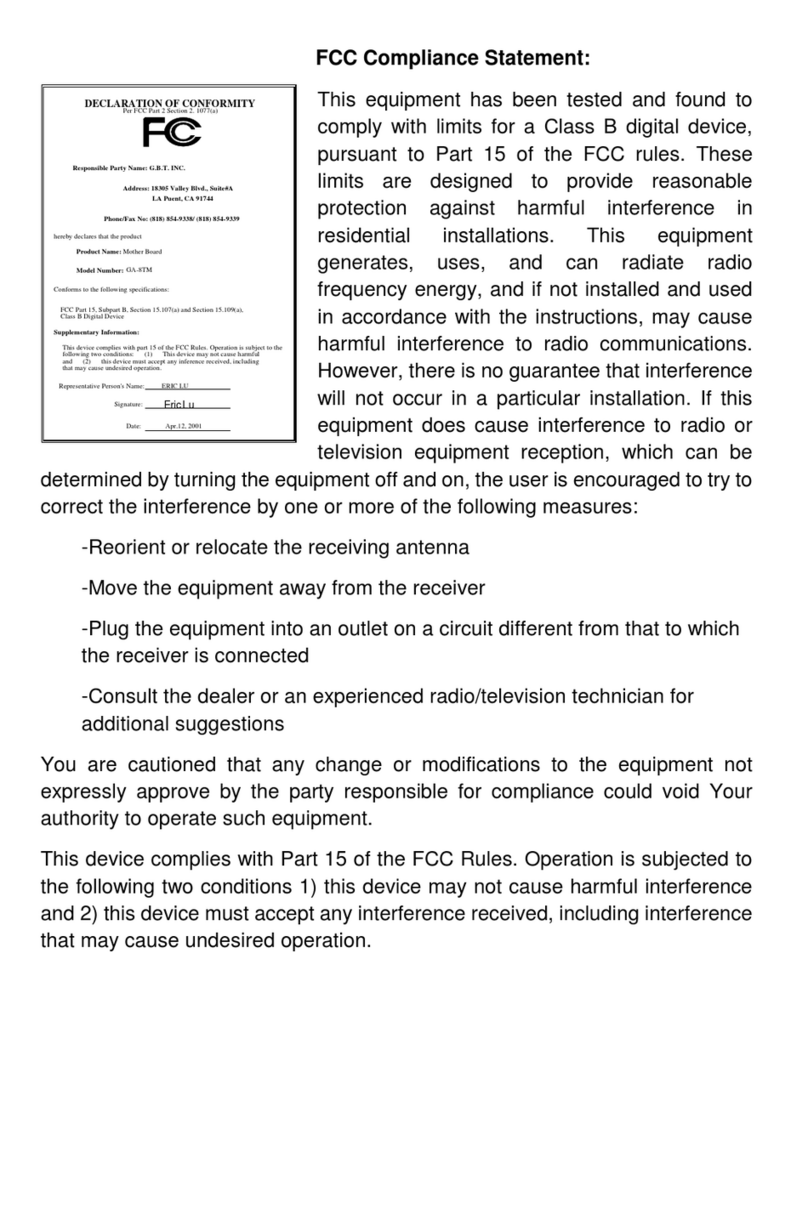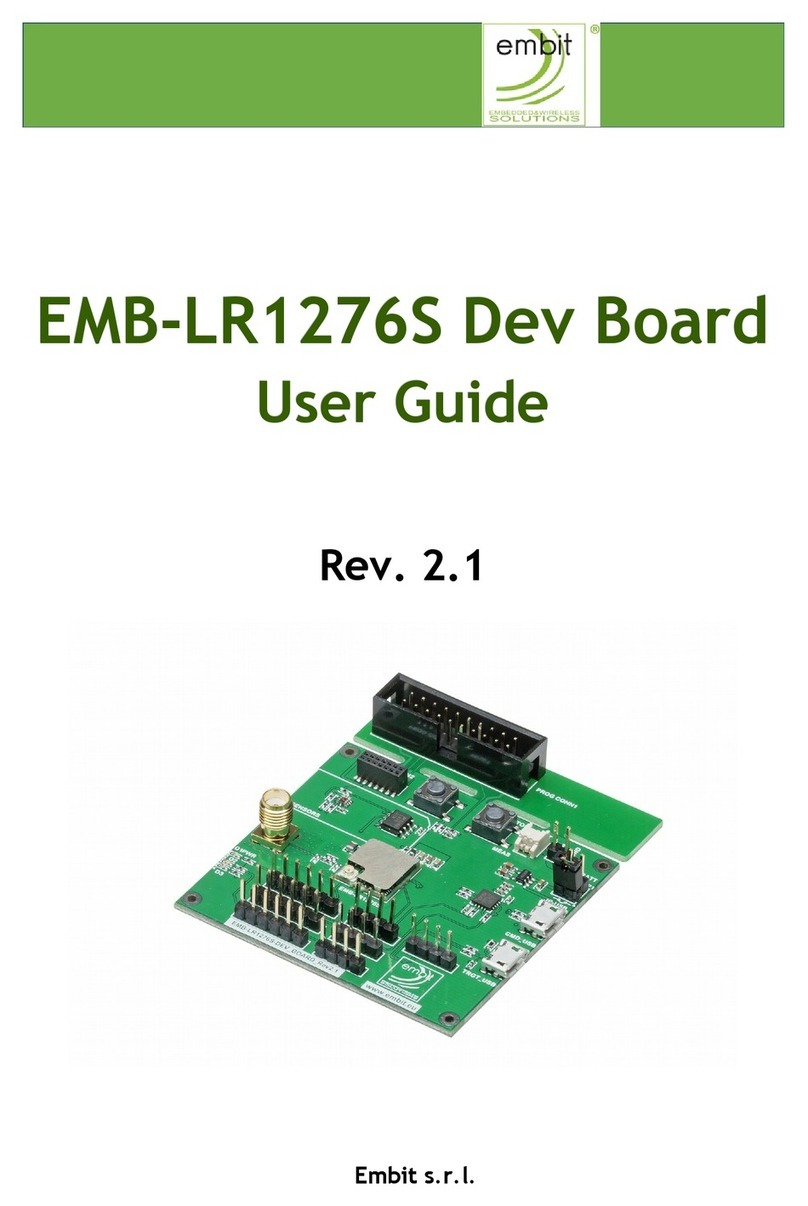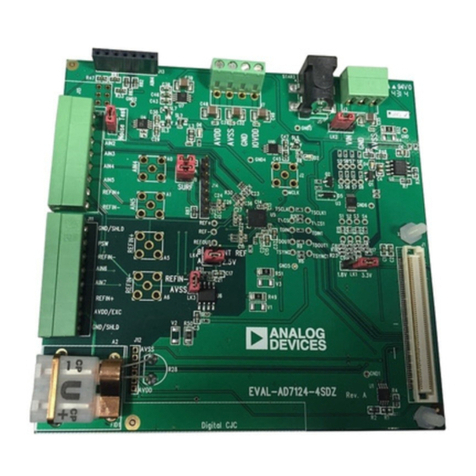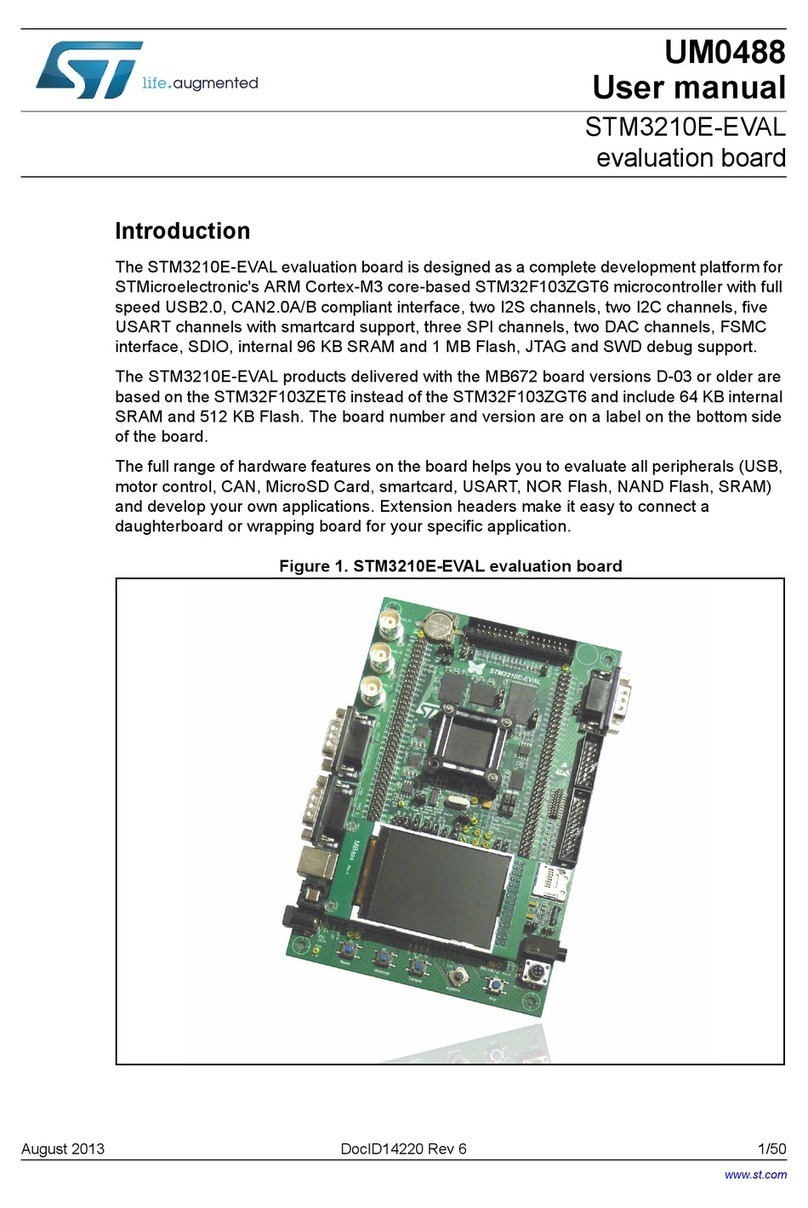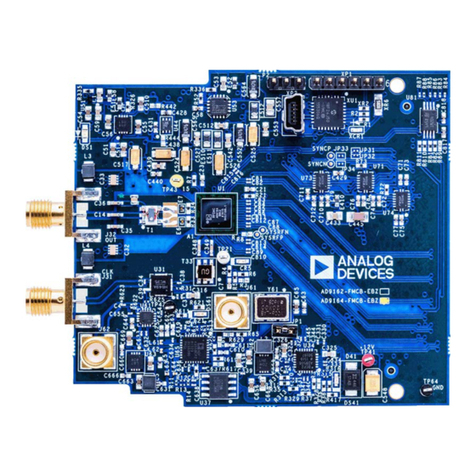
2
dc273af
DEMO MANUAL DC273A
Quick start proceDure
All of the digital control lines are on a 0.070" header (J17).
On the DC273A demonstration board CSMUX and CSADC
are tied together, as are SLK and CLK. This allows the ADC
tobe addressed througha minimum of control lines. When
the CSMUX and CSADC are logic High, address data can
be clocked into the MUX. When CSMUX and CSADC are
logic low, conversion data can be clocked out of the ADC.
Refer to the LTC2408 data sheet for a complete description
of the various serial interface modes.
The DC273A incorporates 2 jumpers: JP1, which allows
the on-board or an external reference, to be selected; and
JP2, which allows selection of 50Hz/60Hz line frequency
rejection.
All the analog inputs are provided with turrets along one
edge of the board, positioned to be compatible with clip
leads. Tw o ground connections (J9 and J10) are provided
for interconnection into an analog subsystem or to be used
as separate returns for two signal groups.
Power and ground are provided on J15 and J16, and ref-
erence in and out are provided on J13 and J14.
Interconnection of analog and digital subsystems can be
made through these ground connections, or all should
return to a star ground at a point in the target system.
All ground connections should be as short as possible.
The multiplexer output is linked to the ADC through a 5k
resistor. Both terminals are available, J11 for MUXOUT,
and J12 for ADCIN. As the multiplexer output can be dis-
abled, multiplexer expansion can be brought to either of
these terminals. Optionally, an amplifier (buffer) can be
used to drive ADCIN, without necessarily removing the 5k
resistor. If an amplifier with voltage gain is introduced, it
is recommended that the resistor be removed. Depending
on the source resistance or drive capabilities of nodes driv-
ing the multiplexer inputs, J11 can be tied directly to J12.
Please see the LTC2400 data sheet for more information
on driving the input of the LTC2408.
SeethetimingdiagramforMUX,andDataOutputoperation.
F0 is available on J17 for external conversion clock. See
full data sheet for use of this line, otherwise, leave open.
Use of external clock requires removal of JP2.
The LTC2408’s F0 pin is available on J17 for those applica-
tions where an external oscillator controls the conversion
time of the ADC. JP2 must be removed in this case. Please
consult the LTC2408 data sheet for more information on
the use of F0. If an external oscillator is not required, leave
pin 1 on J17 open.
parts List
ITEM QTY REFERENCE PART DESCRIPTION MANUFACTURER/PART NUMBER
1 2 C1, C2 CAP., TAN 10µF 16V AVX, TAJB106M016, 3528
2 2 C3, C4 CAP., X7R 1µF 10V AVX, 0805ZC105KAT1A, 0805
3 1 R2 RES., CHIP 3.3 5% TAD CR16-3R3JM, 0603
4 2 R3, R4 RES., CHIP 100 5% TAD CR16-101JM, 0603
5 1 R1 RES., CHIP 5.1k 5% TAD CR16-512JM, 0603
6 16 J1-J16 TERMINAL, TURRET .065" MIL-MAX 2308-02
7 2 JP1-JP2 HEADER, 3×1 .079" CENTER COMM CON 2802S-3G2
8 1 JP3 HEADER, 5×2 .079" CENTER COMM CON 2202S-10G2
9 3 JP1-JP3 SHUNT, CCIJ2MM-138-G COMM CON. CCIJ2MM-138-G
10 1 U2 IC., LT1019ACS8-2.5V LINEAR LT1019ACS8-2.5V, SO8
11 1 U1 IC., LTC2408CG LINEAR LTC2408CG
